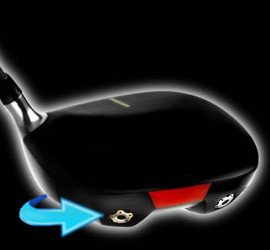In golf, “bias” refers to the inherent tendency of a golf club to promote a specific ball flight or shot shape. It is typically associated with the design and characteristics of the clubhead.
When a golf club has a bias, it means it is intentionally engineered to favor a certain shot shape, either a draw or a fade. This bias can help golfers who struggle with one particular shot shape to correct or enhance their ball flight.
A club with a draw bias is designed to promote a right-to-left shot shape (for right-handed golfers) or a left-to-right shape (for left-handed golfers). It typically has weight distribution or clubface design features that encourage the golf ball to curve in that direction.
Similarly, a club with a fade bias is designed to promote a left-to-right shot shape (for right-handed golfers) or a right-to-left shape (for left-handed golfers). It is engineered to help golfers who tend to slice the ball by minimizing or correcting the slicing spin.
Manufacturers may incorporate bias into the club design by adjusting the center of gravity (CG) position, utilizing perimeter weighting, altering the clubface angles, or implementing other design elements. The goal is to provide golfers with a club that helps them achieve their desired shot shape or correct any persistent ball flight issues.
It's important to note that the term “bias” is more commonly used in the context of drivers, as they have the most significant impact on shot shape due to their length and the player's swing speed. However, the concept of bias can also be applicable to other clubs, such as fairway woods or hybrids, although to a lesser extent.
Bias on a Golf Club: A clubhead that is weighted to produce a particular ball flight is said to have bias. For instance, a club with draw bias is designed to produce a right-to-left flight, or to minimize left-to-right sidespin to combat a slice.
- Should I consider a driver with a draw-bias to help with a fade or slice?
- Can a fairway wood with adjustable weights help fine-tune my ball flight bias?
- What is the effect of fairway wood face angle on shot shape and ball flight bias?
- How do I choose the right fairway wood for my desired ball flight bias (fade or draw)?






